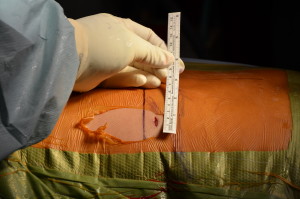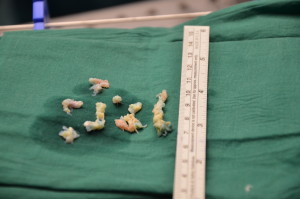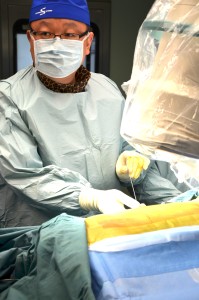Percutaneous Endoscopic Lumbar Discectomy
This procedure is ‘keyhole surgery’ that can be employed to treat slipped discs or prolapsed discs. Percutaneous Endoscopic Lumbar Discectomy or keyhole discectomy is achieved through a small incision at the side of the body. Using an endoscope, the disc is removed with the aide of small instruments. The advantage of keyhole discectomy is that there is minimal destruction of normal tissue resulting in less pain. The patient suffers less time off work.
The procedure is done under sedation and local anaesthesia, not full anaesthesia. This means that there is minimal anaesthetic risk. The patient does not feel much pain as local anaesthetic is given. As there is minimal destruction in the tissue and bone, there is a lot less pain associated with this procedure. The patient can be discharged the next day after surgery. The wound measures about 5-8mm in size. Once it heals, it can barely be seen.




